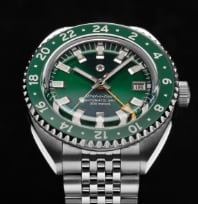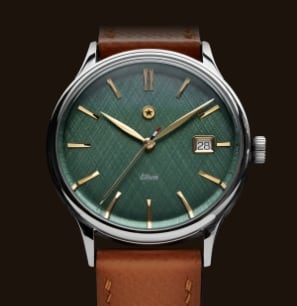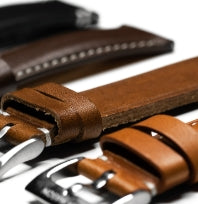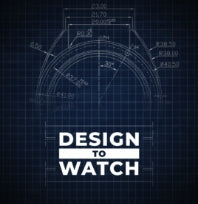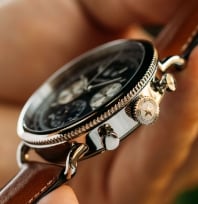Exploring The Different Mechanisms That Make Watches Tick
Watches can be powered by a variety of different mechanisms. Each of these mechanisms, known as watch movements, use different technology to keep a watch ticking accurately.
The three primary types of watch movement are mechanical movement, automatic movement, and quartz movement. These types of movement were invented in the order they are listed above – mechanical first, then automatic, then quartz.
Watchmaking is both an art and a craft. Making fine watches takes skill, precision, and intensely paying attention to each detail. The inner workings of a watch are incredibly complex regardless of its movement, and each of the types of watch movement is fascinating in its own right. Watchmakers pay careful attention to each and every component of a timepiece, and every element of a watch plays a key role in contributing to its functionality and aesthetic beauty.
This post gets in-depth about each of the watch movements – mechanical, automatic, and quartz. If you are about to buy your first watch or are a seasoned veteran with a growing collection, this is information you don’t want to go without.
Watch Movements Vs. Watch Types
Before we start exploring the different watch movements, it’s important to first distinguish between watch movements and watch types. A watch’s movement is the mechanism that allows it to keep ticking and telling time accurately. A watch’s type, on the other hand, is its categorization based on its design and specific features.
Popular types of watches include nautical, aviation, racing, field, and dress watches. Each of these watch types has specific features that distinguish it from others. Some of these features are functional – these are known as complications and provide added convenience to the wearer by displaying the date, an additional time zone, or other useful functions. Other features are purely for aesthetic purposes and can lend to a watch’s unique look.
Each type of watch can be found with quartz, automatic, and mechanical movement. The movement used to power a watch is independent of its categorization by type. In other words, a dive watch can be either quartz, automatic or mechanical, as can any other type of watch.
Knowing how to find the best watch for you takes a combination of exploring watch movements and watch types. A watch’s movement can have a major influence on your watch-wearing experience, as can its type. Depending on your lifestyle, hobbies, fashion preferences, and other factors, you can determine which type of watch is best for you.
How Watch Movement Evolved Over Time
When watches first started to become staples for both fashion and function, they were designed to be carried in a pocket, often attached to a chain. These first pocket watches were powered by mechanical movement, requiring the wearer to periodically wind the watch to keep it ticking.
The earliest wristwatches appeared in the 1800s and were also powered by mechanical movement. Shortly thereafter, automatic movement was introduced. However, this new form of movement was initially only found in pocket watches. It wasn’t until after the first World War that automatic movement started being used to power wrist-worn watches.
In the late 1960s, Japanese watchmakers Seiko released the Quartz Astron 350SQ, the first quartz-powered watch. Seiko revolutionized the watch market by providing exceptional accuracy and increased convenience through the use of a movement that relied on a battery instead of a wound mainspring. Since the release of the Quartz Astron 350SQ in 1969, quartz movement has grown in prevalence, becoming a long-running competitor with automatic and mechanical movement.
The invention of each of these three types of watch movements marked major turning points in watchmaking history. Innovations in the realm of watchmaking have changed the world for the better, giving watch wearers the opportunity to keep time accurately while sporting a well-made timepiece.
Mechanical Movement: What Started It All
The earliest watches were powered by mechanical movement. The pioneers of watchmaking crafted intricate mechanical pocket watches using a combination of interconnected gears, all turning at a precise rate to keep a watch ticking accurately.
In order to keep ticking and keeping time, a mechanical watch needs to be manually wound. When a mechanical watch is wound, the wearer turns a small metal knob known as the crown. When the wearer winds the watch by turning the crown, the mechanical watch builds and stores momentum in the mainspring, a small piece of coiled metal that is interconnected with the watch’s gears.
The stored momentum in a mechanical watch’s mainspring is released in precise intervals that are regulated by the watch’s intricate design. A mechanical watch contains a mechanism called an escapement that regulates the mainspring’s release of power to make the watch tick in timed intervals. The escapement works in tandem with the balance wheel, which is one of the most delicate components in a mechanical watch.
Mechanical watches are fascinating, and their intricacies make them worthy of being considered collector’s items and works of art. As automatic watch movement and quartz movement have made it less common to find mechanical watches on the market, these timepieces have become even more desirable for collectors.
Automatic Movement: Evolving And Innovating For Convenience And Functionality
As watchmaking continued to evolve, timepieces became lower-maintenance and more user-friendly with the advent of automatic movement. First appearing in the late 1700s, automatic movement took a similar approach to powering a watch to mechanical movement. However, automatic watches were unique in that they were self-winding – an automatic watch harnesses the energy from the movements of the wearer’s wrist and stores that energy in the watch’s mainspring.
When wearing an automatic watch, the movement of your wrist engages a weighted rotor mechanism. This rotor spins to store energy in the watch’s mainspring, allowing the watch to wind itself. Thanks to the presence of a crown and winding stem, automatic watches can still be wound manually if necessary. However, consistently wearing an automatic wristwatch makes it rarely necessary for the wearer to wind the watch himself.
Because an automatic watch contains a weighted mechanism, this type of timepiece has a uniquely hefty feel on the wearer’s wrist. For many men, this weight serves as a conscious reminder of a watch’s quality. Like a sturdy, well-made pair of jeans, an automatic watch’s weight makes it feel durable, reliable, and comfortable on the wearer’s wrist.
For many watch enthusiasts, the convenience of automatic movement was enough to render mechanical watches obsolete. However, for others, additional convenience and ease of use have not been enough to replace the timelessness of a mechanical timepiece. While the majority of watch wearers have moved on to either automatic or quartz movement, some avid collectors and dedicated purists have stuck to mechanical watches even as others have moved on.
Quartz Movement: Battery-Powered And Low-Maintenance
Invented in the mid-20th century, quartz movement is one of the simplest, most convenient watch-powering mechanisms. A quartz watch relies on a battery to keep ticking, eliminating the need for winding by the wearer. The battery in a quartz watch generates an electric current that creates a vibration in a piece of quartz inside the watch. This piece of quartz vibrates at a specific frequency, keeping the ticking of the watch accurate.
Quartz watches are remarkably accurate. More lightweight than automatic watches and much easier to maintain than mechanical watches, watches with quartz movement have begun to dominate the analog watch market over the last few decades. There is still a devoted following for automatic watches and a committed niche group who have stuck to mechanical watches. However, quartz has quickly become one of the most prevalent watch movements on the market.
Which Movement Is Best For You?
When it comes to choosing the best watch for you, there are a few key factors to consider. As you can tell, the different types of watch movements require varying levels of maintenance and upkeep from a watch’s wearer.
Depending on your level of investment in watch-wearing as a hobby and a habit, your tolerance for watch upkeep may be lower or higher. Mechanical watches will typically require the most attention and maintenance from the wearer, especially since they need to be manually wound to continue working. However, the process of caring for and wearing a mechanical watch is a rewarding experience for many.
If you are looking for a timepiece with a solid balance of tradition and innovation, an automatic watch is worth considering. Automatic watches are lower-maintenance than mechanical watches but still rely on the classic mainspring mechanism to work. The weightiness of an automatic watch sets it apart as well, giving it a distinct feel that appeals to many watch-wearers.
When you are looking for a watch that is as easy as possible to maintain, quartz movement is the way to go. A quartz watch offers unparalleled convenience to the wearer, making adding a great watch to your outfits simple. Quartz watches are ideal when every second counts, sparing time and energy for men with especially demanding schedules.
Sources:
https://global.epson.com/innovation/core_technology/origin/quartz_watches.html
